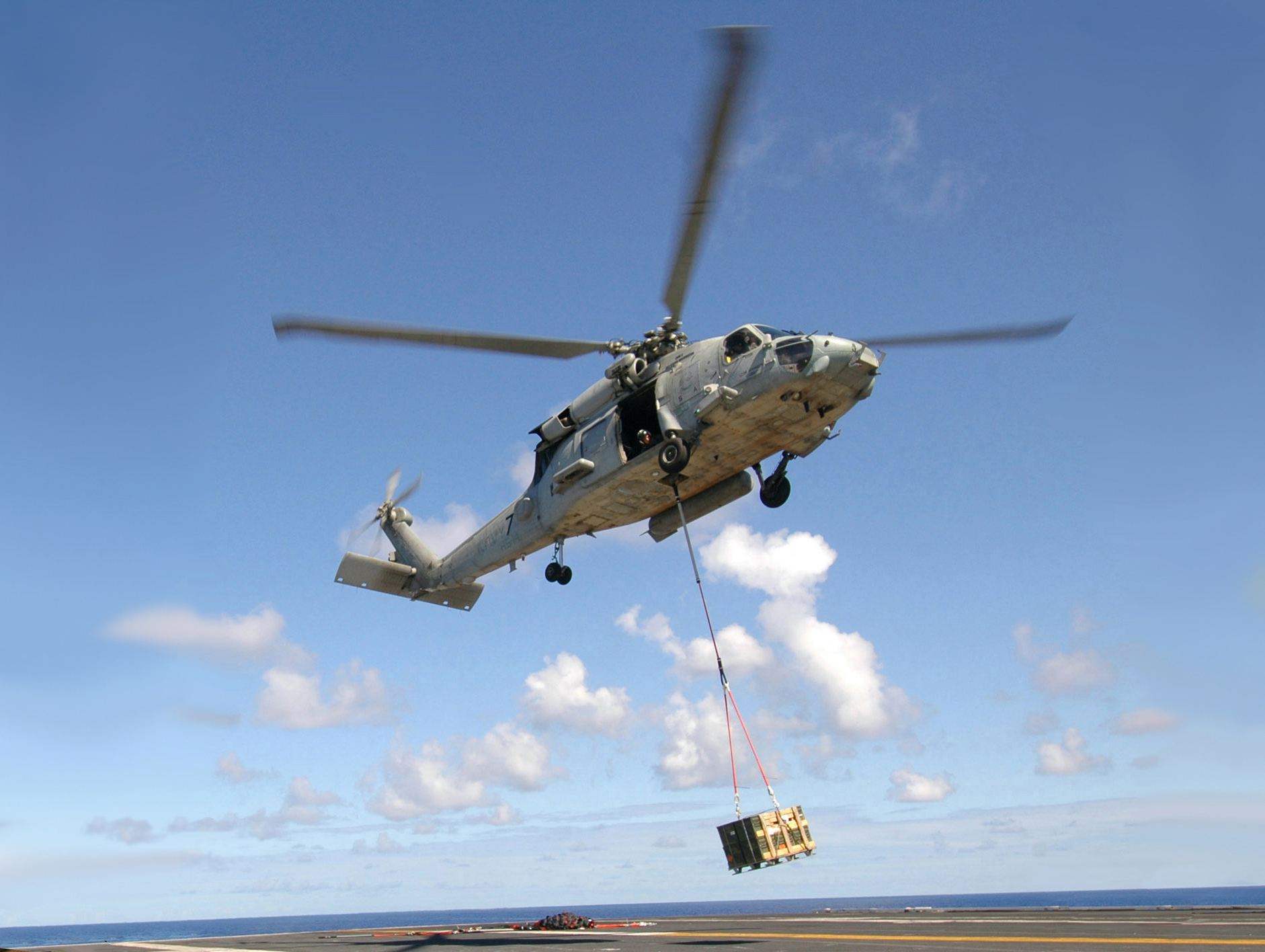Vertical replenishment on:
[Wikipedia]
[Google]
[Amazon]
 Vertical replenishment, or VERTREP, is a method of supply of seaborne vessels by
Vertical replenishment, or VERTREP, is a method of supply of seaborne vessels by
Replenishment Methods
(from the 'tpub.com' website. Accessed 2008-04-25.)
 * Aerial refueling
*
* Aerial refueling
*
 Vertical replenishment, or VERTREP, is a method of supply of seaborne vessels by
Vertical replenishment, or VERTREP, is a method of supply of seaborne vessels by helicopter
A helicopter is a type of rotorcraft in which lift and thrust are supplied by horizontally spinning rotors. This allows the helicopter to take off and land vertically, to hover, and to fly forward, backward and laterally. These attributes ...
. The United States Department of Defense
The United States Department of Defense (DoD, USDOD or DOD) is an executive branch department of the federal government charged with coordinating and supervising all agencies and functions of the government directly related to national sec ...
defines VERTREP as:
...the transfer of cargo between ships using helicopters. VERTREP is often used to supplement connected replenishment. Weapons loads, generally limited to 1,800 kg (4,000 pounds), are transferred from the supply ship to the flight deck of the amphibious ship. The decided advantage of a VERTREP is that it can effect replenishment without ship-to-ship connection.
History
TheUnited States Sixth Fleet
The Sixth Fleet is a numbered fleet of the United States Navy operating as part of United States Naval Forces Europe. The Sixth Fleet is headquartered at Naval Support Activity Naples, Italy. The officially stated mission of the Sixth Fleet in ...
had developed VERTREP routines in 1962 with SH-3 Sea King
The Sikorsky SH-3 Sea King (company designation S-61) is an American twin-engined anti-submarine warfare (ASW) helicopter designed and built by Sikorsky Aircraft. A landmark design, it was one of the first ASW rotorcraft to use turboshaft en ...
helicopters operating from and . Each ship carried one SH-3. At that time, there was some anticipation that nuclear-powered ships might reduce the need for alongside refueling. ''Altair'' performed the first night VERTREP to an aircraft carrier in 1965.
Modern United States Navy VERTREP procedures were initiated from in November 1964. ''Sacramento'' embarked two CH-46 Sea Knight
The Boeing Vertol CH-46 Sea Knight is a medium-lift tandem-rotor transport helicopter powered by twin turboshaft engines. It was designed by Vertol and manufactured by Boeing Vertol following Vertol's acquisition by Boeing.
Development of ...
helicopters to enable simultaneous transfer of ammunition by helicopter while petroleum fuels were pumped through conventional alongside-hose connections. Ammunition could be delivered to other ships up to 100 miles from ''Sacramento''. Receiving ships have greater freedom of maneuver during VERTREP than conventional alongside transfers; and time loss is minimal in comparison to maneuvering alongside and rigging transfer lines. One Cold War VERTREP was accomplished while the receiving United States destroyer maintained contact with a Soviet submarine.
Transfer methods
VERTREP helicopters are equipped with a cargo hook from which may be suspended either special ordnance slings or conventional cargo nets for less sensitive loads. A normal load is two to four pallets, depending on weight. The load is placed in position on the deck of the receiving ship by lowering the helicopter slowly from a high hover, and the load can be released manually by a helicopter crewman positioned to watch the load. In October 2020, the U.S. Navy demonstrated an ability to resupply its ballistic missile submarine USS Henry M. Jackson at sea using a drone, aC-17 Globemaster
The McDonnell Douglas/Boeing C-17 Globemaster III is a large military transport aircraft that was developed for the United States Air Force (USAF) from the 1980s to the early 1990s by McDonnell Douglas. The C-17 carries forward the name of tw ...
, an MH-60R Sea Hawk and a MV-22B Osprey
The Bell Boeing V-22 Osprey is an American multi-mission, tiltrotor military aircraft with both vertical takeoff and landing (VTOL) and short takeoff and landing (STOL) capabilities. It is designed to combine the functionality of a convention ...
.
Rate of transfer
Ships without large flight decks or support equipment like forklifts are often unable to break down palleted loads and transfer them off of the receiving deck as rapidly as the helicopter can deliver another load. VERTREP supply ships carrying more than one helicopter can simultaneously make deliveries to several ships of a task group. Food can be handled somewhat faster than munitions because of the reduced safety considerations.Limitations
Lift capabilities of helicopters are reduced by adverse wind conditions or high temperature or humidity. Pre-loading of pallets is necessary for rapid transfer, and requires advance knowledge of weather conditions and special care to secure light items which may otherwise be blown out of containers. While popular in use, VERTREP is considered relatively dangerous (as compared to other replenishment methods) as it involves danger to the loading personnel due to the helicopter and the load, and in turn, potential risks to the helicopter due toForeign Object Damage
In aviation and aerospace, foreign object debris (FOD), is any particle or substance, alien to an aircraft or system, which could potentially cause damage.
External FOD hazards include bird strikes, hail, ice, sandstorms, ash-clouds or obje ...
(FOD).(from the 'tpub.com' website. Accessed 2008-04-25.)
See also
 * Aerial refueling
*
* Aerial refueling
* Carrier onboard delivery
Carrier onboard delivery (COD) is the use of aircraft to ferry personnel, mail, supplies, and high-priority cargo, such as replacement parts, from shore bases to an aircraft carrier at sea. Several types of aircraft, including helicopters, have ...
* Military logistics
* Underway replenishment
Replenishment at sea (RAS) ( North Atlantic Treaty Organization/Commonwealth of Nations) or underway replenishment (UNREP) ( U.S. Navy) is a method of transferring fuel, munitions, and stores from one ship to another while under way. First devel ...
Notes
References
* *External links
{{Commons category inline, Vertical replenishment Naval warfare Military aviation Military logistics